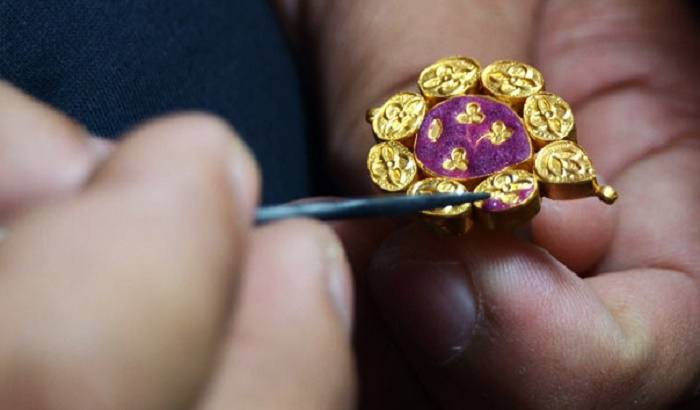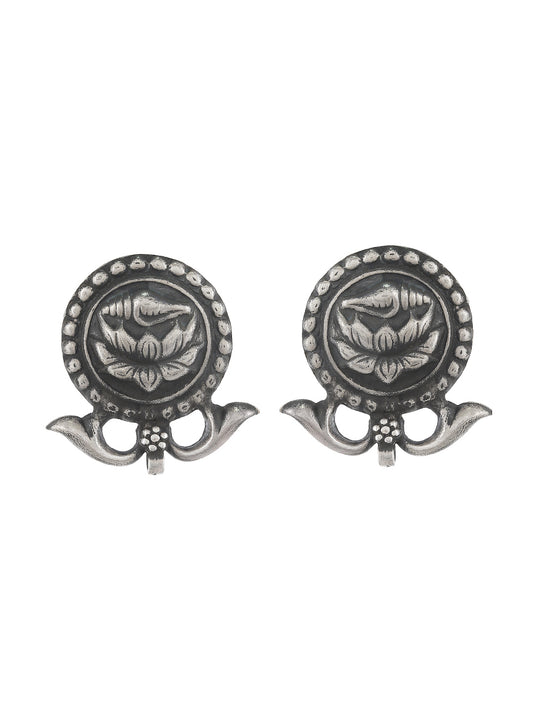Kundan is a traditional Indian jewelry-making technique that dates back to the 16th century. It involves setting precious and semi-precious stones into gold using a distinctive method. The result is stunning, ornate pieces that are a true testament to the skill and artistry of Indian craftsmen. In this blog, we will explore the history and cultural significance of Kundan, as well as the intricate process involved in creating these beautiful works of art. Whether you are a jewelry enthusiast or simply admire traditional art forms, you are sure to appreciate the beauty of Kundan.

Kundan is a traditional Indian jewelry-making technique that has its roots in the Mughal era. It is believed to have originated in the royal courts of Rajasthan and Gujarat in India in the 16th century, and was introduced to the region by the Mughals who brought the technique of setting gems in gold from their native Persia. The word "Kundan" is derived from the Persian word "Kund," which means "highly refined gold."
The Mughals were renowned for their love of jewelry and their sophisticated taste, and Kundan quickly became a popular form of jewelry-making in their court. Initially, Kundan was used to create jewelry for the royal families and aristocracy, and was highly prized for its elegance and intricate designs. The jewelry was typically made of gold and was set with precious and semi-precious stones such as diamonds, rubies, emeralds, and pearls. The stones were carefully selected for their color, quality, and clarity, and were set in such a way that they reflected the light beautifully, creating a stunning display of color and sparkle.
Over time, Kundan spread throughout India and became a popular form of jewelry-making, with various regional styles developing in different parts of the country. For example, the Jaipur style of Kundan is characterized by its bold and intricate designs, while the Lucknow style is known for its delicate and intricate floral patterns. Kundan also became a popular form of bridal jewelry, with brides adorning themselves with intricate necklaces, earrings, and bangles.
The Techniques of Kundan
Credits: Tibarumal Ramniwas
Kundan is a traditional Indian jewelry-making technique that involves setting precious and semi-precious stones into gold using a unique and intricate method. The process of making Kundan jewelry is both time-consuming and labor-intensive, requiring a high level of skill and attention to detail.
The first step in the Kundan process is the creation of the base, which is typically made of gold foil. The gold foil is molded into the desired shape and then filled with a mixture of molten metal and precious stones, known as the "kundan." The kundan is then left to cool and harden, forming the base of the jewelry.
Once the base is complete, the stones are carefully selected and cut to the required size and shape. The stones are then placed into individual cavities in the base, and a special tool is used to press the stone into the kundan, ensuring that it is secure. This process is repeated for each stone, with the craftsman carefully selecting the stones for their color, quality, and clarity.
After all the stones are in place, the jewelry is then finished with a final layer of gold foil, which is molded over the stones to secure them in place. The gold foil is then burnished to a high shine, giving the jewelry its distinctive glitter and sparkle.
One of the unique features of Kundan jewelry is that it is typically not soldered or welded, with the stones being held in place solely by the pressure of the gold foil. This means that Kundan jewelry is more fragile than other forms of jewelry, and must be handled with care.
In addition to the traditional method of Kundan, there are also contemporary techniques that are used to create Kundan jewelry. These include the use of glue and other adhesives to secure the stones in place, as well as the use of more modern tools and machinery to create the base and set the stones.
The jewelry is not only prized for its beauty and elegance, but it also holds significant cultural and historical significance.
In the past, Kundan jewelry was associated with royalty and the aristocracy, and was highly sought-after by the wealthy and powerful. The intricate designs and high-quality materials used in Kundan jewelry made it a symbol of wealth, status, and power. Today, Kundan continues to be highly prized, and is still considered a symbol of wealth and sophistication.
In addition to its cultural and historical significance, Kundan is also an important part of Indian tradition and heritage. The technique has been passed down from generation to generation and is considered an important part of the cultural heritage of India. For many people, wearing Kundan jewelry is a way to connect with their cultural roots and pay homage to their ancestors.
Kundan is also an important part of Indian bridal traditions, with many brides choosing to wear Kundan jewelry on their wedding day. The intricate designs and sparkling stones are believed to bring good luck and prosperity to the bride and her family, and are seen as a symbol of the bride's beauty and elegance.
Finally, Kundan is also an important part of the Indian economy, with the jewelry-making industry being a major contributor to the country's economy. The industry provides employment to thousands of people and is a significant source of income for many families.
The Care and Maintenance of Kundan Jewellery
Kundan jewelry is a beautiful and precious piece of art that deserves proper care and maintenance to keep it looking its best for years to come. Here are some tips on how to care for your Kundan jewelry:
-
Store your Kundan jewelry in a cool and dry place, away from moisture and direct sunlight. This will help to prevent tarnishing and fading of the metal and gems.
-
Clean your Kundan jewelry regularly using a soft cloth and warm soapy water. Avoid using harsh chemicals or abrasive materials, as these can damage the metal and gems.
-
Avoid exposing your Kundan jewelry to chemicals, such as perfumes, cosmetics, and household cleaners, as these can cause discoloration and damage.
-
When not in use, store your Kundan jewelry in a soft cloth or jewelry box to prevent scratches and damage.
-
If your Kundan jewelry requires professional cleaning, take it to a jewelry expert who specializes in Kundan jewelry care. They will have the knowledge and expertise to properly clean and maintain your piece.
-
Have your Kundan jewelry professionally inspected annually to ensure that it is in good condition and to address any issues that may arise over time.
-
If you notice any damage or wear to your Kundan jewelry, such as loose stones or cracks in the lac, have it repaired as soon as possible to prevent further damage.
By following these simple tips, you can keep your Kundan jewelry looking beautiful and radiant for years to come. So treat your Kundan jewelry with the care and respect it deserves and enjoy its beauty for generations to come.
In conclusion, Kundan jewelry is a timeless piece of art that has been cherished for centuries. Its intricate designs and sparkling stones have captured the hearts of people from all walks of life and have become a symbol of wealth, sophistication, and cultural heritage. Kundan jewelry is not just a fashion statement, but a piece of history that is passed down from generation to generation. It holds significant cultural and historical significance and is an important part of Indian bridal traditions. With its beauty and elegance, Kundan jewelry is sure to continue to be treasured for many more years to come. Whether you are looking for a statement piece to wear to a special event, or a timeless treasure to pass down to your children, Kundan jewelry is the perfect choice.






